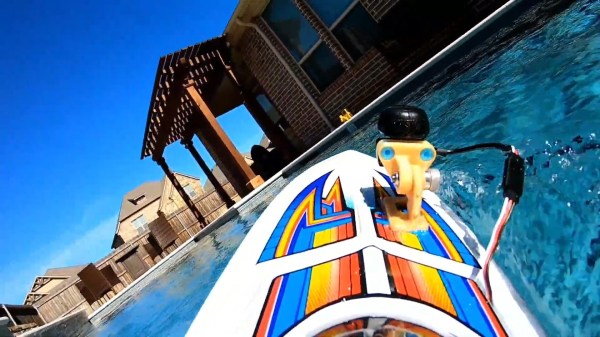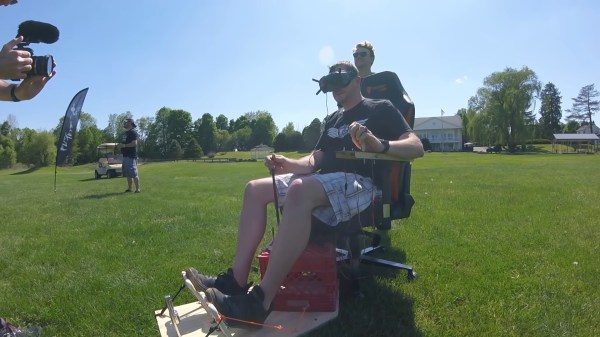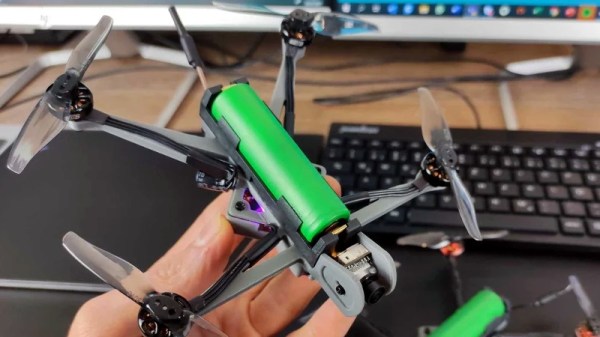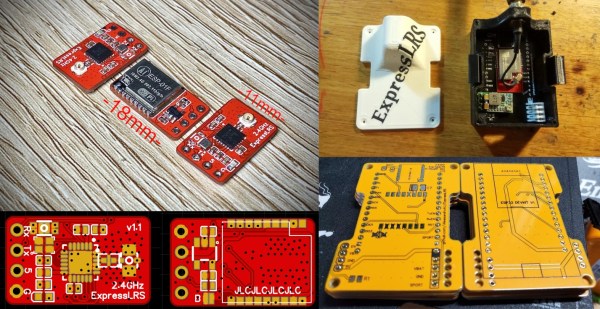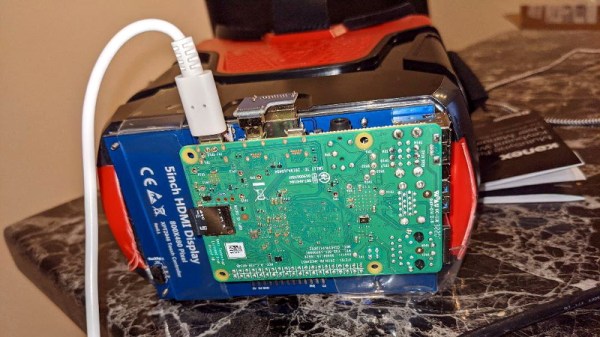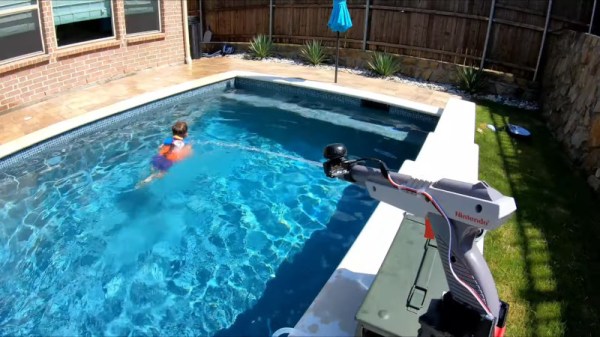Mowing the lawn can be a tedious job. Tired of the effort involved, [i did a thing] decided to enlist the help of [Makers Muse] to build a radio controlled mower instead to make the backyard chore a little more interesting. (Video, embedded below.)
The mowing itself is done by a typical push-along garden mower with a gasoline engine. However, it’s fitted with twin DC gear motors harvested from a mobility scooter. The mowers original front wheels were also removed, replaced with casters from the same mobility scooter that donated the drive train. Off-the-shelf speed controllers were then used to run the motors, and hooked up to an RC receiver. The mower could then be steered via a radio controller set up with mixing to enable the twin-motor setup to steer and drive.
An FPV camera was then fitted on the front of the mower, sitting on a stack of kitchen sponges that act as a isolator to negate the effects of the engine vibrations on the camera. The result is a relatively smooth video feed, allowing the operator to sit at a comfortable distance and control the mower via radio and goggles.
It may not be the most effective way of trimming the lawn, but it does look like a fun project, and sometimes that’s all that matters. Of course, you could always upgrade to a fully autonomous mower instead.
Continue reading “Building A Quick And Dirty RC Mower With FPV”


